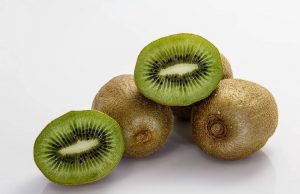A Sweet and Nutritious Citrus Delight
Why Choose Tangerines?
Tangerines are a popular citrus fruit known for their sweet, juicy flavor and easy-to-peel skin. They remain a favorite snack for both children and adults because of their refreshing taste and numerous health benefits. Moreover, tangerines pack essential vitamins and nutrients, making them an excellent addition to a healthy diet. In this guide, we’ll explore the nutritional benefits, culinary uses, and tips for selecting and storing tangerines, highlighting why you should keep them stocked in your kitchen.


Nutritional Benefits of Tangerines
1. Rich in Vitamins and Antioxidants
Tangerines provide over 30% of the daily recommended intake of vitamin C in just one medium fruit. This essential vitamin boosts the immune system, promotes skin health, and supports overall wellness. In addition, tangerines contain vitamin A and several B vitamins, which contribute to energy production and general health. The antioxidants in tangerines help combat oxidative stress, thereby reducing the risk of chronic diseases.
2. Low in Calories and High in Fiber
One of the best things about tangerines is their low calorie content — a medium tangerine contains only about 47 calories. Their natural sweetness makes them a satisfying snack without the guilt associated with high-calorie treats. Furthermore, tangerines are high in dietary fiber, which promotes digestive health, aids weight management, and helps you feel full longer.
3. Hydration Benefits
Thanks to their high water content, tangerines offer excellent hydration. Proper hydration supports healthy bodily functions, and by including tangerines in your diet, you can meet your hydration needs while enjoying a delicious snack.
Culinary Uses of Tangerines
1. Fresh Snacks and Salads
You can enjoy tangerines fresh, either on their own or added to fruit salads. Their sweet, juicy segments add a burst of flavor that enhances any dish. Additionally, tossing tangerine segments into green salads introduces a refreshing twist and a touch of sweetness that complements savory ingredients.
2. Juicing and Smoothies
Tangerines are ideal for juicing, producing a refreshing and flavorful beverage. Drink tangerine juice on its own, or blend it into smoothies for added sweetness and nutrition. For example, combining tangerine juice with bananas or berries creates a delicious and nutritious drink.
3. Cooking and Baking
You can also use it in cooking and baking. Their zest adds a bright, citrusy flavor to marinades, dressings, and desserts. Incorporate tangerine juice into sauces or glazes to elevate the flavor of roasted meats and vegetables. Moreover, tangerine slices work well in baked goods such as cakes and muffins, delivering a delightful burst of flavor.
Choosing and Storing Tangerines
1. Selecting the Best Tangerine
When selecting tangerines, look for fruits that feel firm, heavy for their size, and have smooth, shiny skin. Avoid it with blemishes, soft spots, or wrinkles. A bright orange color signals ripeness, while a dull appearance may suggest the fruit is past its prime.
2. Proper Storage
You can store tangerines at room temperature for a few days or place them in the refrigerator for up to two weeks. To maintain freshness, store them in a breathable bag or container to allow air circulation. Avoid sealing tangerines in plastic bags, as this can encourage mold growth.
3. Using Tangerines in Recipes
Feel free to experiment by adding it to various recipes, ranging from salads and desserts to main dishes and sauces. By trying different combinations, you’ll discover how tangerines can enhance your favorite meals.



